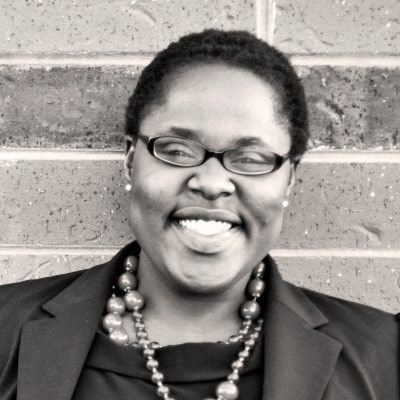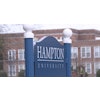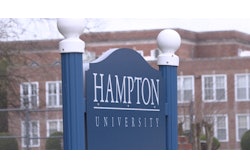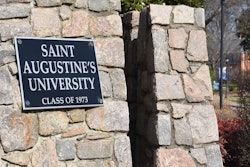Historically Black Colleges and Universities (HBCUs) make up 3% of the nation’s colleges and universities, and 20% of Black graduates in the U.S. HBCUs are leading producers of America’s Black judges, lawyers, doctors, and they produce 50% percent of the nation’s Black teachers. Despite these noteworthy contributions to society, opponents of HBCUs have criticized the lack of fundraising efforts at these institutions and continue to call into question their relevance. Nevertheless, a large segment of society, principally, business and political leaders as well as philanthropists, among others, strongly support the value of HBCUs. In fact, during the pandemic they coalesced around these venerable institutions as the nation experienced what many have deemed a racial reckoning, ushered in by the BlackLivesMatter movement and the murder of George Floyd.
 Brandy Jackson
Brandy JacksonThis period of racial reckoning has seen many philanthropists celebrate the enormity of HBCUs by providing unprecedented financial donations. For example, philanthropist, Mackenzie Scott was the frontrunner in 2020, donating nearly $500 million dollars to a variety of HBCUs. In June of 2020, Reed Hastings, CEO of Netflix, and his wife donated $120 million to Spelman, Morehouse, and the United Negro College Fund. Their goal was to provide financial support for HBCU students and to acknowledge the cultural impact and resiliency of these institutions. A few weeks later, inspired by the Netflix’s gift, the Community Foundation of Greater Memphis Board of Trustees gave LeMoyne-Owen College a $40 million dollar endowment beneficiary gift. Finally, at the end 2020, Dominion Energy committed to giving $25 million to 11 HBCUs. Although 2020 was an exceptional philanthropic year of giving to HBCUs, with noticeable national attention being drawn to Black institutions, many stakeholders wonder how can HBCUs increase or maintain this level of support once we transcend this period of racial reckoning.
A Cultural of Philanthropy
To continue the momentum of giving at HBCUs, institutional leaders should not only set fundraising campaign goals, but work to create institutions that embody a cultural of philanthropy. Research has shown that many organizations do not have environments that support fundraising success or even understand how a “cultural of philanthropy” is demonstrated in organizations. Nevertheless, a culture of philanthropy, which is a subset of organizational cultural, is a process in which an entire company works together in the process of securing resources. Creating a cultural of philanthropy is not about increasing donations, but more about setting the conditions for fundraising to reach the common good. Specifically, in establishing an environment of philanthropy, HBCUs must be intentional in examining attitudes, behaviors, and feelings that support or hinder philanthropic efforts. In launching a cultural of philanthropy, everyone has a buy-in and are ambassadors to participate in relationship building. From the secretary to the president, every role has an opportunity to promote philanthropy. In order to continue to building philanthropy at HBCUs, a shift must be made from strategic fundraising to building deliberate alliances and relationships. Because HBCUs are not monolithic, the cultures of giving will look different and unique to each institution. However, it should be institutional leaders’ primary objective to retain donors to advance the mission and stability of their institutions as well as the well-being of students.
Alumni Engagement and Alumni Giving
In the effort to building philanthropy at HBCUs, institutional leaders should view alumni as valuable assets to the college or university. Interacting with alumni is not a process that should begin at graduation but start when they arrive as freshmen. It is alumni, who are brand ambassadors, that have devoted interest to their alma mater. Alumni can be of great assistance, being a cheer leader, by sharing with others extraordinary news about the university. In addition, they can provide advocacy and offer internships and mentorship opportunities to students. As a result, it is important that HBCUs implement strong engagement strategies with alumni. Such engagement should be continuous and not only during a crisis. Studies have shown institutions that have attained high alumni giving rates, have clear fundraising strategies, with a focus on creating students as lifelong donors.
Recruiting corporate leaders to HBCU Board
Given that board members of higher educations have the fiduciary obligation to exercise financial stewardship and oversight, HBCU leaders should appoint board members who have a strong acumen and connection to the business world. Due to the unprecedent financial challenges caused by COVID-19, HBCUs need board members with a wealth of knowledge, experience and entrepreneurial spirit. HBCUs should also recruit business leaders that have expertise in diverse fields and not only in STEM and business areas. Although private and public boards are governed differed, both groups of institutions need leaders that come from backgrounds that are beyond the conventional pool of higher education leaders and alumni.
Sharing HBCUs Narratives
Having a strong narrative for an organization is not only about storytelling but more about engaging others to be active in the company brand. Hagel challenges others to see companies’ narratives not only as stories but more as corporative inspirational narratives that are open-ended, in which the outcome is unresolved, yet to be determined. Essentially this definition indicates that the legacies of HBCUs are continuing to evolve and unfold, and these institutions must use the power of their narratives to document such. It is in this moment that HBCUs are able to reengage alumni, draw new donors and partnerships by having strong narratives that compel others to act. By HBCUs working each day to write new narratives about their institutions, they have the power to shape a new future by sharing how their institutions make an impact on students, society, and individual communities. We must continue to share that HBCUs annually generate to the American society 14.8 billion in economic impact. As many of our students enter HBCUs as low-income, first generation students, research has shown 70% HBCU graduates attain middle-class incomes and most low-income student increase their long-term economic position. To stay relevant and competitive in this higher education market, HBCUs must continue to make their narrative strong by reassessing and refining their institution’s story. By doing so, this allows like-minded individuals to have a personal connection, which increases the potential of attracting new students, partnerships, and equally importantly, new donors.
Brandy R. Jackson is a Ph.D. student in Howard University’s School of Education (HUSOE) Higher Education Leadership & Policy Studies program. In addition, she also serves as the Assistant Dean for Enrollment and Student Affairs for HUSOE.















